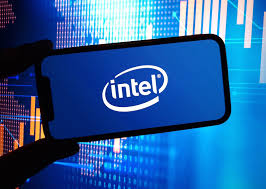Intel Corporation is reportedly reallocating production resources to prioritize datacenter and enterprise technology chips, as ongoing global semiconductor shortages continue to disrupt supply chains. According to Network World, the company’s strategy now places stronger emphasis on server, cloud computing, and AI workloads—sectors deemed central to Intel’s long-term growth and profitability.
Pivot Toward High-Demand Enterprise Segments
The decision follows a slowdown in consumer demand for PC and laptop processors, driven by economic uncertainty and shifting technology trends. In contrast, enterprise computing and high-performance computing (HPC) markets have maintained strong momentum, fueled by the rapid expansion of AI applications, big data processing, and cloud infrastructure investments.
Intel Foundry Services Showing Signs of Recovery
Meanwhile, Tech Startups reports that Intel Foundry Services (IFS)—the company’s manufacturing arm—is showing early signs of recovery. Intel has been securing new strategic partnerships to boost its competitiveness against leading foundries such as TSMC and Samsung Foundry. These collaborations are expected to enhance Intel’s process technology roadmap and reinforce its role as a global chip supplier.
Balancing Datacenter Growth and Manufacturing Revival
Analysts suggest that Intel’s dual-pronged strategy—expanding datacenter chip output while revitalizing foundry operations—signals a renewed effort to rebuild investor confidence and reclaim market leadership. The company’s ability to meet enterprise computing demand while stabilizing production could determine its future standing in the semiconductor industry.
Strategic Outlook: Positioning for Long-Term Leadership
If successful, Intel’s shift toward enterprise and AI-driven chip production may solidify its leadership in the datacenter market and position it as a credible global foundry alternative in the coming years. The move also reflects a broader trend across the semiconductor sector, where chipmakers are racing to balance innovation with supply chain resilience amid ongoing global demand pressures.

